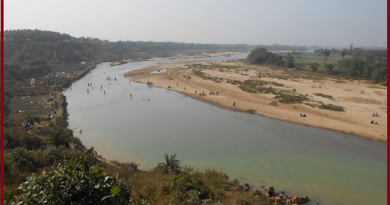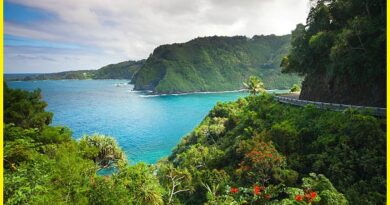Rashtrapati Bhavan: A Blend of History, Art, and Governance
Rashtrapati Bhavan
Rashtrapati Bhavan, located in New Delhi, India, is the official residence of the President of India. It stands as a majestic symbol of India’s democracy, history, and architectural heritage. The building was designed by British architects Edwin Lutyens and Herbert Baker and was constructed between 1912 and 1929. Originally intended to be the residence of the Viceroy of India during British rule, it became the official residence of the President of India after independence in 1947.
Rashtrapati Bhavan is an architectural marvel, blending elements of Indian and Western architectural styles. Spread over an area of 320 acres, it features intricate carvings, grand domes, ornate columns, and vast gardens. The design reflects Lutyens’ vision of creating a structure that symbolizes power, dignity, and unity. The main building of Rashtrapati Bhavan consists of four floors and 340 rooms. It includes the President’s official residence, guest rooms, offices, and ceremonial halls such as the Durbar Hall and Ashoka Hall. The Mughal Gardens, inspired by the Persian Charbagh style, are a prominent feature and are open to the public during certain times of the year.
Rashtrapati Bhavan has been witness to several historic events, including the swearing-in ceremonies of India’s Presidents, important state functions, and visits by dignitaries from around the world. It serves as a symbol of India’s transition from colonial rule to an independent, democratic nation. In addition to its architectural significance, Rashtrapati Bhavan is a repository of Indian art and culture. It houses a remarkable collection of paintings, sculptures, artifacts, and antique furniture, showcasing India’s rich cultural heritage.
1. Rashtrapati Bhavan Garden
Rashtrapati Bhavan, the official residence of the President of India, features several exquisite gardens within its sprawling estate. One of the prominent gardens is the Mughal Gardens, which comprises various themed gardens, including the Herbal Garden (Amrit Udyan).
Mughal Gardens
The Mughal Gardens are the main attraction within the Rashtrapati Bhavan complex. These gardens are inspired by the classic Persian Charbagh style of gardening, characterized by symmetrical layouts, lush greenery, water channels, and floral arrangements. The Mughal Gardens are open to the public during the spring season (usually February to March) when the flowers are in full bloom. Visitors can stroll through the garden’s terraced lawns, admire the colorful flower beds, and enjoy the serene ambiance.
Amrit Udyan Rashtrapati Bhavan
Amrit Udyan, also known as the Herbal Garden, is one of the notable gardens within the the Presidential Palace complex in New Delhi, India. Amrit Udyan is situated within the expansive grounds of Rashtrapati Bhavan, the official residence of the President of India. It is part of the Mughal Gardens complex, which includes various themed gardens and floral arrangements.
Amrit Udyan serves as a dedicated space for cultivating a diverse range of medicinal plants and herbs. The garden is designed to showcase the rich botanical heritage of India and promote the importance of herbal remedies and traditional medicine systems. The garden features a wide variety of medicinal plants, aromatic herbs, and rare botanical specimens sourced from different regions of India. Visitors can explore the garden and learn about various herbs and plants’ therapeutic properties, uses, and cultural significance.
Amrit Udyan provides an educational opportunity for visitors to gain insights into the traditional knowledge systems associated with herbal medicine in India. Interpretive signage, guided tours, and informational displays are available to enhance visitors’ understanding of the plant’s medicinal value and cultural significance. The garden plays a role in conserving and preserving India’s rich botanical heritage by cultivating and propagating rare and endangered medicinal plants. It contributes to efforts aimed at biodiversity conservation, sustainable agriculture, and the promotion of environmentally friendly practices.
In addition to the Mughal Gardens and the Herbal Garden, Rashtrapati Bhavan also features several other themed gardens and green spaces within its estate. These include the Musical Garden, Spiritual Garden, Bonsai Garden, Circular Garden, and the Rose Garden, among others. Each garden has its own unique features, plant collections, and landscaping designs, offering visitors a variety of experiences to enjoy.
Also Read- Regal Resplendence- The Story of the ‘Red Fort Delhi’
2. Rashtrapati Bhavan Museum
The Rashtrapati Bhavan Museum, located within the estate of Rashtrapati Bhavan in New Delhi, India, is a fascinating repository of India’s history, art, and culture. The museum was inaugurated on July 25, 2016, by the then-President of India, Pranab Mukherjee. It was established to provide visitors with insights into the rich heritage and legacy of Rashtrapati Bhavan and its occupants.
The museum houses a diverse collection of artifacts, memorabilia, photographs, documents, and gifts received by the Presidents of India over the years. These items reflect India’s history, culture, and diplomatic relations with other countries. The museum is divided into various sections, each focusing on different aspects of Rashtrapati Bhavan and its role in shaping India’s destiny. Some of the themes explored in the museum include the architectural evolution of the Presidential Palace, the lives of past Presidents, the history of the building, and its significance in India’s political landscape.

The museum offers interactive exhibits, multimedia presentations, and audiovisual displays to engage visitors and enhance their learning experience. These exhibits provide a deeper understanding of the historical events, personalities, and cultural influences associated with the Presidential Palace. The museum is open to the public and welcomes visitors from all walks of life, including tourists, students, scholars, and history enthusiasts. Guided tours are available to help visitors navigate through the museum and gain insights into its various collections.
3. Rashtrapati Bhavan Visit
Visiting Rashtrapati Bhavan, the official residence of the President of India is a unique and enriching experience that offers insights into the nation’s history, culture, and governance. Visitors can explore Rashtrapati Bhavan by booking guided tours in advance. These tours provide access to selected areas of the estate, including the Mughal Gardens, the Rashtrapati Bhavan Museum, and other designated spaces. It’s advisable to book your tour online through the official website of the President of India or authorized tour operators.
Plan your visit well in advance, considering factors such as availability of tour slots, weather conditions, and any special events or closures. Tours may have limited availability, especially during peak tourist seasons, so it’s advisable to book your tickets as early as possible. Rashtrapati Bhavan is a high-security zone, and visitors are required to undergo security checks before entering the premises. Make sure to carry valid photo identification and follow the instructions provided by security personnel.



